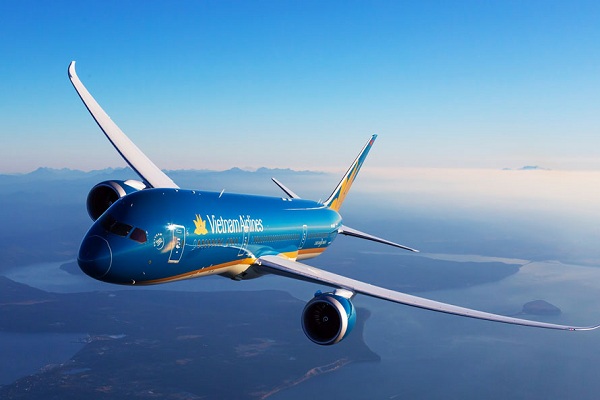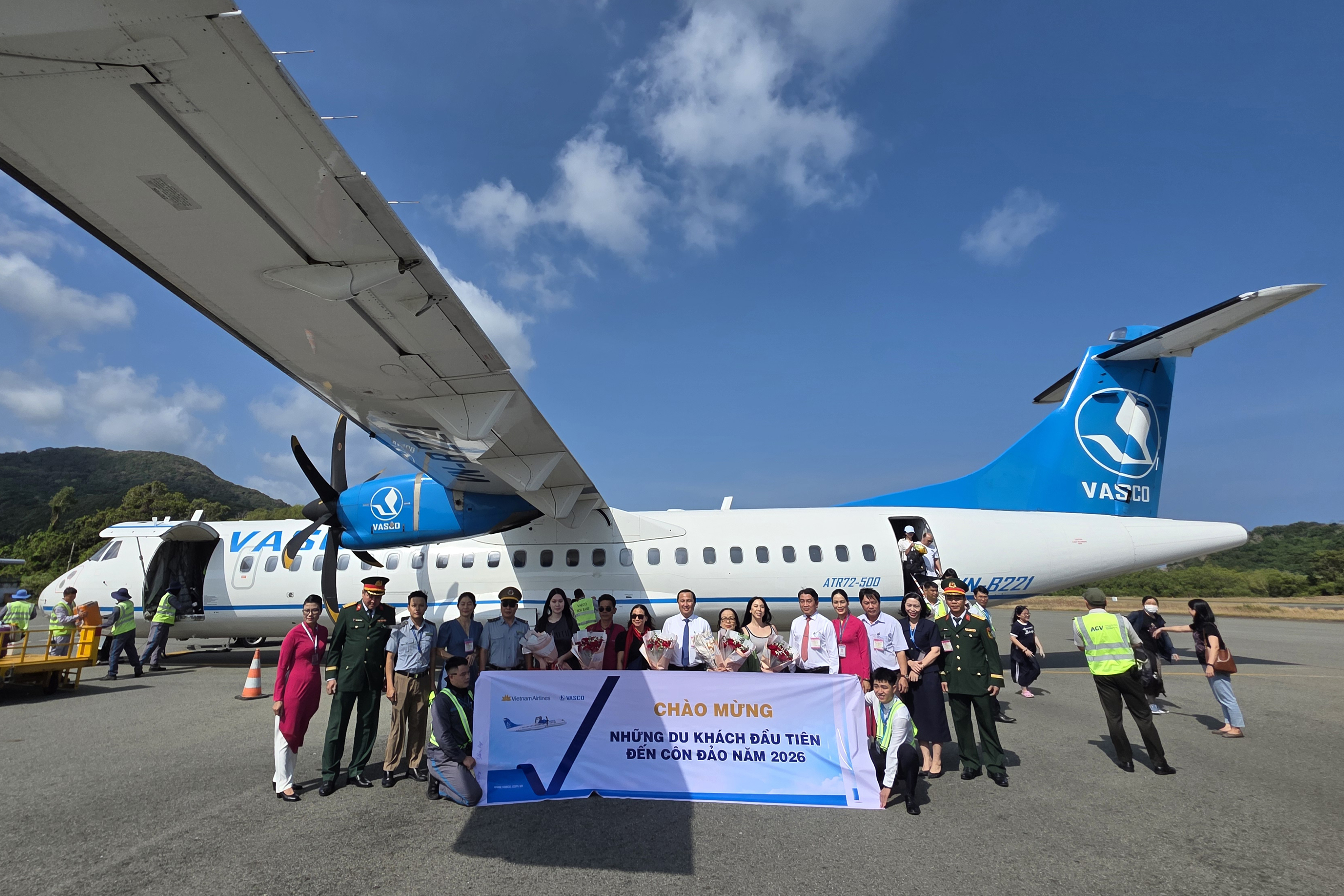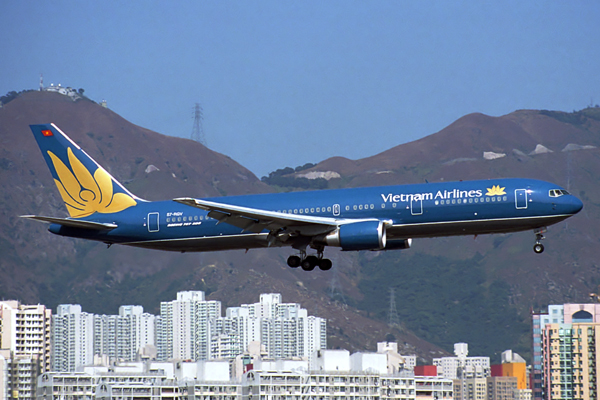
Last of VNA’ A330s to be retired (Cre: Pbase).
Vietnam’s phasing out of the A330 runs in tandem with the carrier’s overwhelming desire for, and pucrahse of, new-generation narrowbody jets. Despite a slow-down in its rate of growth in the latter part of last year, the carrier now appears to be back on course and likely to invest in 50 narrowbody jets by 2025.
Over half of the carrier’s recent narrowbody purchases have supplanted its B777-200ERs and A330-200s. The 777s – of which there were originally eight – were finally retired from service in 2017.
On the question of which company will receive the order for the glut of Vietnamese narrowbodies, the jury is out. In an interview with FlightGlobal the airline’s CEO Duong Tri Thanh said,
“By definition it’s a narrowbody [and] whether it’s a Boeing or an Airbus, it is open for consideration. When the fleet is below 50-70 there is a need to have a common type.”
Fleet replacement
According to CAPA, Vietnam’s 63-year-old carrier currently operates three A330-200s, 12 A350-900s, three ATR 72-500s and 11 787-9s. Specifically, the company’s narrowbody fleet comprises 54 A321-200s and 11 A321neos. The A321- 200s are, on average, 8.3 years old.
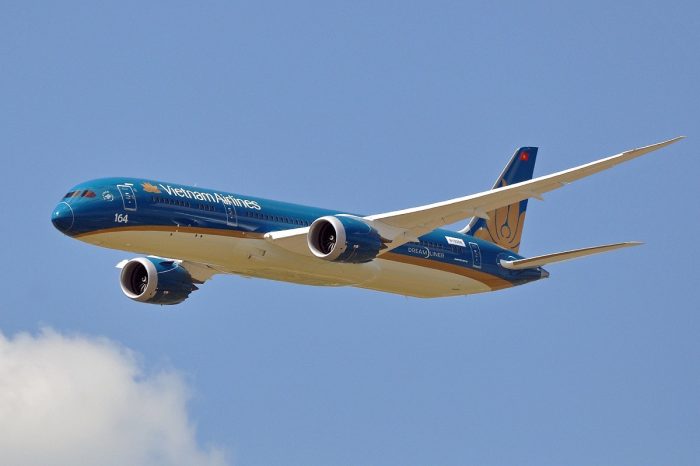
New B787-10s to fly Vietnam’s long-haul routes (Cre: Wikimedia Commons ).
Industry insiders suggest the government-owned airline will choose either the A320neo or the 737 MAX (if/when it is re-certified). The carrier already has three Airbus A320neos on order from Chinese lessor ICBC. These are expected to be delivered in the early part of 2020. For CEO Thanh, leasing remains on the table due to a backlog of orders at both manufacturers.
Ambitions
The new narrowbodies will allow the airline to concentrate its efforts on the lucrative Northeast Asian markets of South Korea and Japan. Regardless of the problems with the MAX and the pitch instability of the A321neo, the carrier hopes to accelerate its expansion into North Asia by the end of this year.
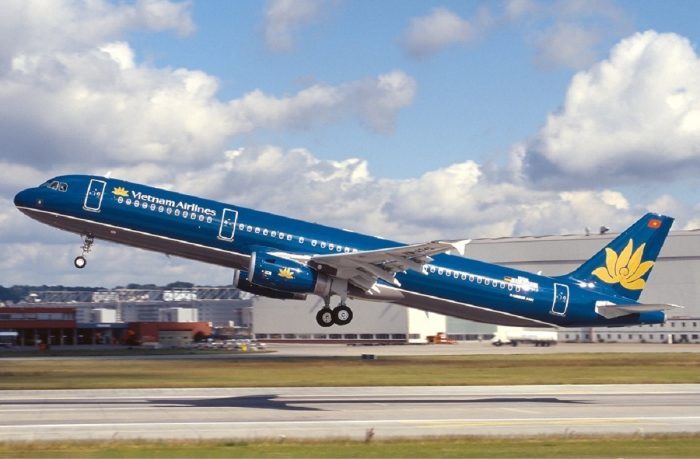
Fleet age much reduced following the arrival of new-gen aircraft (Cre: Wikimedia Commons).
Writes CAPA, CEO Thanh still expects to receive his entire order of 20 A321neos by the end of 2019. This will run in tandem with the phasing out of the current engine option version of the type.
Meanwhile, the advent of Boeing’s mid-size 787-10 and its use on long-haul routes will allow the carrier to open new secondary routes using its narrowbody manifest. By doing it can maximize its short- and long-haul activities in the blossoming Vietnamese aviation industry.
Commitments met
The Vietnam fleet is forecast to total 33 by the end of 2022, including orders already expected. Once it receives the last of its 787-10s the company will consider its widebody commitments to have been met. As a consequence, it will not place any more orders of the type, according to CAPA.
VNA continues to reduce the average age of its flotilla. Since 2016, the arrival of new generation wide and narrow-body types has seen a notable rejuvenation of the jet fleet. Furthermore, the carrier looks likely to replace its fleet of nine-year-old ATRs with a younger regional type in due course.
Cre: Simple flying
Nguyen Mai Huong-COMM






